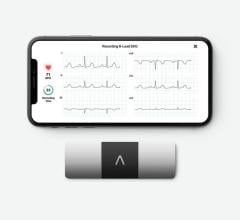October 7, 2013 – With healthcare providers under continuing pressure to provide better care at lower costs, remote cardiac monitoring devices are becoming popular and valuable patient care tools, fueling U.S. market growth expected to top more than 25 percent between 2011 and 2016.[1] The devices enable cardiologists to monitor patients for extended periods of time outside the costly hospital environment, improving their ability to identify problems and provide early intervention that can support better outcomes and reduce the need for expensive future care.
LifeWatch Services is convinced that integrating the remote monitoring data directly into providers’ electronic medical record (EMR) systems is becoming increasingly critical to providing cost-effective, high quality cardiac care.
Meeting Demand for Efficient Care
Cardiovascular disease continues to be the country’s leading cause of death for both men and women, costing close to $109 billion annually in healthcare, medications and lost productivity, according to the American Heart Association. With remote devices, cardiologists and cardiac electrophysiologists (EPs), specialists in diagnosing and treating the electrical activities of the heart, can more efficiently collect and analyze data on larger numbers of cardiac patients.
However, the ability to quickly and conveniently access this data and integrate it with other information in the patient’s EMR is the true key to improving care, especially given that patients are likely to be treated by multiple physicians, observes LifeWatch CEO Yacov Geva. “The tremendous expansion of EMR systems in hospitals and physician practices over the past few years now makes it possible to have a centralized repository of information for each patient. Interoperability between the cardiac monitoring devices and EMRs puts monitoring results right at the physicians’ fingertips, along with all the other patient data,” he says.
Interoperability streamlines both the ordering of the devices and the reporting of results. Staff can electronically request monitors, including durations, start dates and patient demographic and insurance information. As soon as a patient begins using the monitor, daily reports go directly into the patient’s EMR.
Better Informed Decision-Making
In addition to providing a comprehensive picture by consolidating the monitoring data with the patient’s diagnostic procedures, device implants, treatment and follow-up, integrating the data into the EMR allows cardiologists to see firsthand any monitoring results they choose, not simply review the EP summaries.
“This richer set of data means they can make more timely and informed decisions about the best course of care, and better coordinate with other caregivers,” said Vincent Norlock, LifeWatch senior product director.
Improving care coordination is essential to reducing readmissions, a top priority of hospitals now that they face a financial “readmission penalty” from Medicare if they have higher than expected readmission rates for cardiac patients. As a result, interoperability that provides access to information from multiple sources and systems across the care continuum has become increasingly vital. The requirements that hospitals and physicians demonstrate the ability to exchange information in order to earn federal incentives under the Meaningful Use (MU) Stage 2 objectives also underscores the importance of telemetry-EMR interoperability.
As Gregory K. Feld, M.D., director of the cardiac electrophysiology program at the University of California, San Diego, points out in a recent article in EP Lab Digest, “…it is frustrating that although we have such advanced technologies today, they’re all so isolated from one another. It is advantageous for EP programs to have this interoperability with various systems in order to start integrating this massive amount of data to manage patients.”
For more information: www.lifewatch.com
1. HIS InMedica. "World Market for Diagnostic Cardiology Devices and Remote Cardiac Monitoring Services." 2013.


 November 21, 2023
November 21, 2023 








